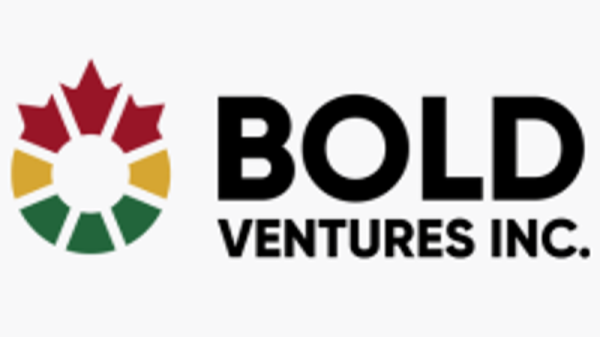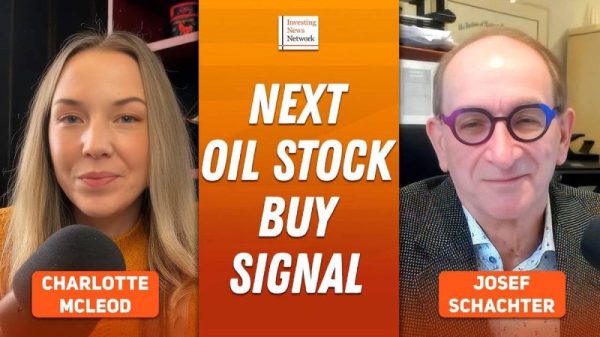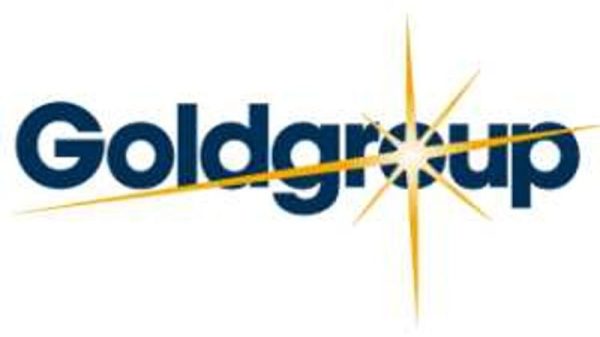The biggest pharmaceutical companies in the world are responsible for developing and manufacturing the vast majority of prescription drugs, giving them a key role in the life science industry.
The pharma sector is responsible for the discovery, development and manufacturing of drugs and medicine. Companies are developing innovative treatments in areas like immuno-oncology and neurology, as well as novel options for rare diseases.
With the pharmaceutical sector projected to reach a staggering US$1.6 trillion in total revenue by 2028, the need for the industry is great. Opportunities for investment are also sizeable, but what’s the best place to start? Those who want exposure to the pharma market may want to begin by looking at the major players in the space.
With that in mind, here are the five biggest drug companies by market cap. Data for this article was compiled using Investing.com’s stock screener on June 27, 2023, and stocks are listed from largest to smallest.
1. Johnson & Johnson (NYSE:JNJ)
Market cap: US$457.33 billion
Next on this list of the biggest pharma companies is Johnson & Johnson, a life science holding firm that is massive in scale and covers many areas through its subsidiaries. Its pharmaceuticals subsidiary is Janssen Pharmaceuticals, which focuses on six therapeutic areas: cardiovascular disease and metabolism, infectious diseases and vaccines, neuroscience, oncology, immunology and pulmonary hypertension.
In May, Janssen announced that it had received Fast Track Designation from the US Food and Drug Administration (FDA) for its milvexian drug, which it is developing in collaboration with Bristol Myers Squibb (NYSE:BMY), for all three of its prospective indications. Milvexian is an investigational oral factor XIa inhibitor that is being studied for its efficacy and safety in reducing thrombosis, or blood clotting, with indications for patients who have had ischemic strokes, acute coronary syndrome or atrial fibrillation.
2. Eli Lilly and Company (NYSE:LLY)
Market cap: US$439.39 billion
Founded in 1876, Eli Lilly and Company develops products for human and animal health. The company has research and development facilities and manufacturing plants in eight countries and has done clinical research in over 50 countries. Its pharma products for humans include therapies for the areas of diabetes, oncology, immunology and pain. The company’s clinical trial research areas include neurodegenerative diseases such as Alzheimer’s disease, cardiovascular health and weight management.
In March, Eli Lilly made headlines when it announced it would be capping customers’ out of pocket price of insulin at US$35 per month.
June saw more big news for the company when it announced it will acquire Dice Therapeutics (NASDAQ:DICE) for US$2.4 billion to add the latter company’s experimental oral treatment for psoriasis to Eli Lilly’s portfolio. Later that month, Eli Lilly shared the results from a Phase 2 trial for its triple-G weight loss injection; participants experienced a mean weight loss of up to 17.5 percent at 24 weeks and up to 24.2 percent over 48 weeks.
3. Novo Nordisk (NYSE:NVO)
Market cap: US$354.79 billion
Novo Nordisk has honed its efforts on both type 1 and type 2 diabetes, obesity, hemophilia and growth disorders. The company markets products in 170 countries. Its diabetes treatment offerings include the app-supported NovoPen 6 and NovoPen Echo Plus, which give diabetes patients a less invasive way to monitor and record dosing information than traditional methods. In 2022, Novo announced a partnership with Microsoft (NYSE:MSFT); Novo will use the tech giant’s artificial intelligence, cloud and computational services for its drug discovery and development.
In early June, Novo announced its intentions to acquire a controlling stake in BIOCORP, followed by it attempting to acquire all outstanding shares and ultimately delist BIOCORP with which it has collaborating on the Mallya add-on for the NovoPen over the past few years. Following that acquisition, the company states it intends to invest further in BIOCORP with the goal of ‘delivering cutting edge devices and delivery solutions to improve care for people across the globe living with serious chronic diseases.’
4. Merck & Company (NYSE:MRK)
Market cap: US$286.91 billion
Merck & Company has a massive product line and pipeline, including therapies for diabetes, cancer, vaccines, hospital care and animal health. Currently, the company has over 30 programs in phase 3 trials and over 10 under review. The company aims to treat conditions such as cancer, HIV, HPV, Ebola, hepatitis C, cardio-metabolic disease and antibiotic-resistant infections.
Merck is another pharmaceutical company with acquisition news in June, announcing it has successfully completed its acquisition of Prometheus Biosciences, which has now been delisted and is a subsidiary of Merck. Prometheus’ leading candidate is indicated for treatments of autoimmune diseases including ulcerative colitis and Crohn’s disease.
Merck also announced that the FDA had approved a new indication for its drug PREVYMIS to prevent cytomegalovirus disease in adult kidney transplant recipients who are at high risk.
5. AbbVie (NYSE:ABBV)
Market cap: US$234.69 billion
AbbVie’s areas of focus, according to the company, are ones in which they have proven their expertise and where they have greater potential to improve treatments for those conditions. The areas of focus their pharmaceutical products and research include immunology, oncology, neuroscience, eye care and aesthetics.
In late May, AbbVie announced that the FDA had approved its RINVOQ for adult patients with moderate to severe active Crohn’s disease for whom TNF blockers had either not been adequate in treating the condition or were not an option. The treatment is already approved for sixth other indications in rheumatology, dermatology and gastroenterology.
FAQs for pharmaceutical stocks
What does the pharmaceutical industry do?
The pharmaceuticals industry encompasses a a variety of company types that have different — although sometimes overlapping — roles to play, including but not limited to the ones below.
The most famous ones are the big pharma companies, giants like the ones listed above that have a variety of subsidiaries, large pipelines and many products in their portfolios. There are also smaller research and development companies, which sometimes get acquired by larger ones if their work seems promising. Companies in these categories research, develop and sometimes bring to market drugs aimed at filling unmet needs, such as drugs to treat conditions that are currently untreatable or ones to help people who are resistant to pre-existing treatment options.
Once patents run out on prescription drugs created by the aforementioned companies, generic drug manufacturers will create generic versions that are much cheaper than the brand name versions.
Additionally, wholesale companies play a large role. According to Common Wealth Fund, wholesalers have four areas through which they affect the buying and distributing of drugs: ‘setting generic drug prices, leveraging list price increases, competing in specialty drug distribution, and mitigating or exacerbating drug shortages.’
What is the big pharma business model?
Big pharma companies have a fairly consistent business model. Often, the company’s R&D team will slowly develop a new drug through many stages of testing to prove the drug’s efficacy, safety and necessity. If all trials are completed successfully, the company will apply to government organizations such as the FDA, who must approve the drug before it can be mass produced, marketed and sold.
Companies can skip a number of these steps through acquisitions of smaller companies or of parts of their portfolio, or through in-licensing, which results in two companies sharing the burden of a drug’s development through the pipeline and commercialization.
Once the drug is approved by a certain country’s health organization, it can then be marketed and prescribed. As patents expire after 20 years, at which time generic versions can be developed, companies will lobby and advertise to try to get as many sales as possible during that window.
Of course, large pharma companies have many drugs in their pipelines at any given time, and many don’t make it to approval.
Who are the ‘Big 3’ in pharma?
The ‘Big 3’ in pharma refers to the three largest wholesalers, AmerisourceBergen (NYSE:ABC), Cardinal Health (NYSE:CAH) and McKesson (NYSE:MCK). Collectively, just those three companies make up over 90 percent of wholesale prescription drug distribution in the US.
Which country is number one in the pharma industry?
The US is the top pharmaceutical country, with five of the top 10 pharma companies by revenue headquartered in the nation, including the top three of Pfizer (NYSE:PFE), AbbVie and Johnson & Johnson. The country is also in the lead when it comes to consumer spending on pharmaceuticals due to its famously high cost of brand name drugs compared to other countries.
The US is also the top country globally for research and development spending — companies that are part of the PhRMA, a trade group that represents US biopharmaceutical companies, spent US$102 billion on R&D in 2021 out of a total of US$238 billion spent by pharmaceutical companies globally that year.
What are the problems in the pharmaceutical industry?
One of the largest problems with the industry, particularly in the US, is the high cost of treatments put out by pharmaceutical companies. According to a study looking at prescription drug spending between 2016 and 2021 in the US, prescription drug prices were 2.5 times the cost on average of prices in similar high-income nations.
An example that has been the center of discourse in recent years is insulin, which can cost Americans with type 1 diabetes over US$1,000 per month. In early 2023, US President Joe Biden signed the Inflation Reduction Act into law, which included a cap of US$35 per month on insulin for seniors on Medicare, although it does not help people who are uninsured or have private health insurance. Eli Lilly has now instituted that same price cap for all users of their insulin, and there is push for further legislation.
However, while progress in insulin pricing is finally happening, it’s far from the only medication with high costs. According to the aforementioned study, the top 10 percent most expensive drugs account for less than 1 percent of all prescriptions, but make up 15 percent of all retail prescription spending.
While generic versions of medications are relatively cheap, they can’t be created until patent protection for the brand name version expires, which is usually 20 years after filing for the patent.
What is the future of pharmaceuticals?
Pharmaceutical companies will have to adapt to changing times as we move forward. The world is shifting, with economic woes, geopolitical disruptions and supply chain concerns affecting nearly every sector. Innovation continues to accelerate as well, and the medical landscape has changed in the wake of COVID-19. Additionally, the US government is making moves to address the astronomical prices of prescription medicines as the industry comes under increasing scrutiny.
For a look at what is else is effecting the market in 2023, read our 2023 Pharma Market Forecast.
Are pharmaceutical stocks risky?
While established players like the big pharma and wholesale companies discussed above should be relatively consistent, small companies are make-or-break depending on whether their drugs are successful. This means that investors could see much higher returns than large companies, but run the risk of taking massive losses if development ends in failure.
Securities Disclosure: I, Lauren Kelly, hold no direct investment interest in any company mentioned in this article.





























